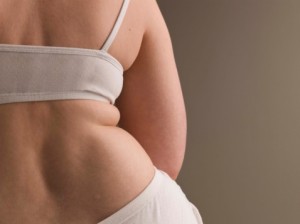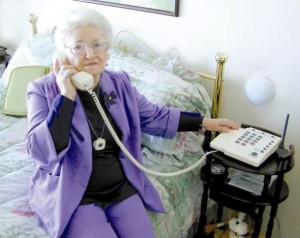July 11th, 2012 by Dr. Val Jones in News, Opinion
2 Comments »
 American Medical News drew my attention to a recent study published in the International Journal of Eating Disorders. Among the surprising findings, 62% of women surveyed (all over the age of 50) said that their weight or shape negatively impacted their life, and 13.3% had eating disorders. About 7.5% of respondents admitted to trying diet pills to lose weight, while 2.2% used laxatives, and 1.2% vomited to reduce their weight (aka bulimia).
American Medical News drew my attention to a recent study published in the International Journal of Eating Disorders. Among the surprising findings, 62% of women surveyed (all over the age of 50) said that their weight or shape negatively impacted their life, and 13.3% had eating disorders. About 7.5% of respondents admitted to trying diet pills to lose weight, while 2.2% used laxatives, and 1.2% vomited to reduce their weight (aka bulimia).
Eating disorder treatment facilities have noticed a surge in older patients, including one center that experienced a 42% increase in the number of women older than 35 seeking treatment at its clinics nationwide over the past decade.
Healthcare providers should be aware that eating disorders are not just a problem for young women. Women of all ages are now struggling with a rail-thin beauty ideal in a country of rising obesity rates, sedentary lifestyles, and ubiquitous junk food. And for older women with eating disorders, the health risks of osteoporosis, stomach ulcers, and cardiovascular abnormalities are much higher.
Perhaps primary care physicians should include an eating disorder questionnaire in their regular visits with boomers? We may be surprised by the prevalence of this issue, and I bet that many of our patients will be glad we asked.
June 19th, 2012 by Dr. Val Jones in Health Policy, Opinion
7 Comments »
 Along with the invention of smart phones, an entire medical mobile application (app) industry has cropped up, promising patients enhanced connectivity, health data collection, and overall care quality at lower costs. Last year the FDA put a damper on the app industry’s quick-profit hopes by announcing that it intends to regulate certain medical apps as medical devices. In other words, if the app is used to connect with a medical device or to turn a smart phone into such a device (whether it can check your blood sugar, blood pressure, heart rhythm, etc. or suggest diagnoses), it must undergo safety and efficacy checks by the FDA before it can be brought to market. That process is likely to inflate app development costs exponentially, thus creating a chilling effect on the industry.
Along with the invention of smart phones, an entire medical mobile application (app) industry has cropped up, promising patients enhanced connectivity, health data collection, and overall care quality at lower costs. Last year the FDA put a damper on the app industry’s quick-profit hopes by announcing that it intends to regulate certain medical apps as medical devices. In other words, if the app is used to connect with a medical device or to turn a smart phone into such a device (whether it can check your blood sugar, blood pressure, heart rhythm, etc. or suggest diagnoses), it must undergo safety and efficacy checks by the FDA before it can be brought to market. That process is likely to inflate app development costs exponentially, thus creating a chilling effect on the industry.
I actually think that FDA oversight is a good thing in this case, since it could protect patients from potentially misleading health information that they might use to make treatment or care decisions. But more importantly, I wonder if a lot of this fuss is moot for the largest, sickest, segment of the U.S. population?
For all the hype about robo-grannies, aging in place technologies, and how high tech solutions will reduce healthcare costs, the reality is that these hopes are unlikely to be achieved with the baby boomer generation. I believe that the generation that follows will be fully wired and interested in maximizing all that mobile health has to offer, but they’re not sick (yet) and they’re also not the proverbial “pig in the python” of today’s healthcare consumption.
I’m not saying that mobile health apps have no role in caring for America’s seniors – their physicians and care teams use tablets and smart phones, their kids do too, and a small percent of seniors may adopt these technologies, but I’m a realist when it comes to massive adoption by boomers themselves. Wireless connectivity, texting, personal digital health records, and asynchronous communication is just not in their DNA. Take away a teenager’s smart phone and he or she is likely to be completely flummoxed by reality. Now give that phone to a baby boomer and the flummoxing will be roughly equivalent, but centered upon the device. The teen can’t live without the constant phone/internet connection, and the senior is overwhelmed by the lack of human interface and unfamiliar menus.
What makes me so sure of my pronouncements? I just spent a month making house calls to almost 70 different Medicare Advantage members in rural parts of this country. And I can tell you that almost none of them used any sort of smart phone app to manage their health. These “odd creatures” actually enjoyed face-to-face human contact, they used their phones almost exclusively to talk to people (not surf the Internet), and they took hand-written notes when it was important for them to remember something. They even had paper calendars that they used to schedule their physician appointments and keep records of their medications and procedures. How “weird” is that?!
When I asked one of the seniors if she’d be interested in using a cell phone to check her blood pressure and have that automatically uploaded to her doctor’s office she replied,
“I’m too old to learn that stuff, dear. I’m lucky if I can find my slippers in the morning.”
The reality is that the average app user isn’t sick, and sick people don’t see a need for apps… yet. So our challenge is to meet seniors where they are instead of trying to change their habits. House calls are the best way I know of to get a full appreciation for individual quirks, compliance challenges, and health practices. If we are really serious about reducing healthcare costs in our aging population, it may take some low-tech solutions. As un-sexy as that may be, it’s time that we put down the iPhone and practiced some good old-fashioned medicine.
October 27th, 2011 by StaceyButterfield in Opinion
No Comments »

Surely you’ve read before (perhaps even in our publication) about the challenges of Boomers and younger generations working together. You know the drill– these young’uns are good with computers but they’re all hung up on this idea that they should get to have a life. But Cam Marston, the opening speaker at MGMA put a new spin on the concept– addressing how generational differences can affect the way that you attract, and treat, patients.
A lot of it is pretty obvious. Millennials (those born between 1980 and 2000) like getting information by text, Boomers not so much. Younger patients do a lot more of their own internet research.
But some of the advice on how to act on these generations’ well-known differences was Read more »
*This blog post was originally published at ACP Internist*
February 10th, 2011 by PJSkerrett in Health Tips, Research
No Comments »

 As a youngster, I loved being part of the baby boom — it meant there were dozens of kids on my block who were ready to play hide-and-seek or join mysterious clubs. Now that I’m of an AARP age, there’s one club I don’t want to join: The one whose members have bypass scars, pacemakers, or other trappings of cardiovascular disease. The American Heart Association’s (AHA) gloomy new forecast on cardiovascular disease tells me it won’t be easy to avoid.
As a youngster, I loved being part of the baby boom — it meant there were dozens of kids on my block who were ready to play hide-and-seek or join mysterious clubs. Now that I’m of an AARP age, there’s one club I don’t want to join: The one whose members have bypass scars, pacemakers, or other trappings of cardiovascular disease. The American Heart Association’s (AHA) gloomy new forecast on cardiovascular disease tells me it won’t be easy to avoid.
The AHA foresees sizeable increases in all forms of cardiovascular disease (see table) between now and 2030, the year all of the boomers are age 65 and older. Those increases will translate into an additional 27 million people with high blood pressure, eight million with coronary heart disease, four million with stroke, and three million with heart failure. That will push the number of adult Americans with some form of heart disease to 110 million.

(Percentages refer to the percentage of Americans aged 18 years and older.)
If the AHA’s projections are accurate, the cost of treating cardiovascular disease would balloon from $272 billion today to $818 billion in 2030. Add in the cost of lost productivity, and it jumps to more than $1 trillion. Yikes!
Although obesity and inactivity are part of the problem, much of the increase comes from the graying of the baby boom. We can’t stop boomers from aging, but we can fight cardiovascular disease, a condition the AHA calls “largely preventable.” Read more »
*This blog post was originally published at Harvard Health Blog*
January 23rd, 2011 by admin in Opinion, True Stories
No Comments »

This is a guest post by Dr. John Schumann.
**********
In 2011, the first wave of baby boomers will turn 65 years old. Sixty-five still has currency because that’s the age at which non-disabled Americans are eligible to be covered under the Medicare program (now itself having reached middle age).
As our economy continues to recover (hopefully) from the Great Recession, the entrance of millions of Americans to the Medicare rolls over the next decade and a half will be a formidable planning challenge. Look at this chart to see how the baby boomers population has surged:

So is the promise of healthcare reform (the “PPACA“), which will enlarge Medicaid by an additional 16 million Americans — about half of the projected growth in coverage for those currently uninsured.
A couple of recent patient encounters got me thinking about these phenomena, and how we are very much in historically uncharted territory. Never have we had so many living so well for so long. We have an entire generation of people reaching “seniority” who will continue to want the most out of life, without many guideposts on how to achieve it. Read more »
*This blog post was originally published at ACP Internist*
 American Medical News drew my attention to a recent study published in the International Journal of Eating Disorders. Among the surprising findings, 62% of women surveyed (all over the age of 50) said that their weight or shape negatively impacted their life, and 13.3% had eating disorders. About 7.5% of respondents admitted to trying diet pills to lose weight, while 2.2% used laxatives, and 1.2% vomited to reduce their weight (aka bulimia).
American Medical News drew my attention to a recent study published in the International Journal of Eating Disorders. Among the surprising findings, 62% of women surveyed (all over the age of 50) said that their weight or shape negatively impacted their life, and 13.3% had eating disorders. About 7.5% of respondents admitted to trying diet pills to lose weight, while 2.2% used laxatives, and 1.2% vomited to reduce their weight (aka bulimia).

 Along with the invention of smart phones, an entire medical mobile application (app) industry has cropped up, promising patients enhanced connectivity, health data collection, and overall care quality at lower costs. Last year the FDA put a damper on the app industry’s quick-profit hopes
Along with the invention of smart phones, an entire medical mobile application (app) industry has cropped up, promising patients enhanced connectivity, health data collection, and overall care quality at lower costs. Last year the FDA put a damper on the app industry’s quick-profit hopes











